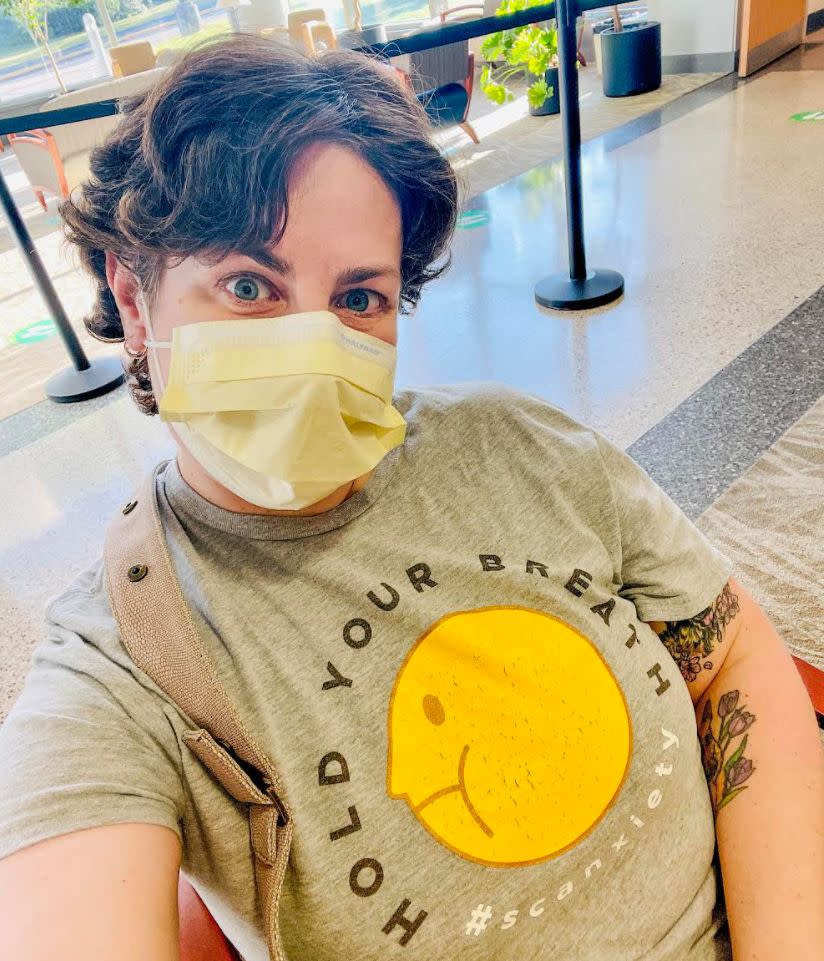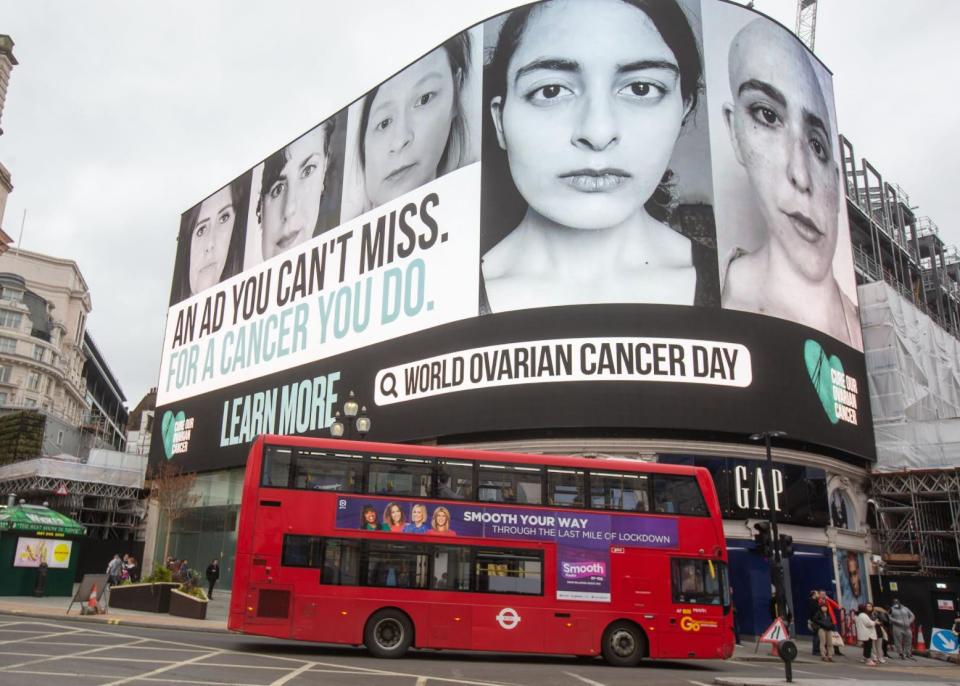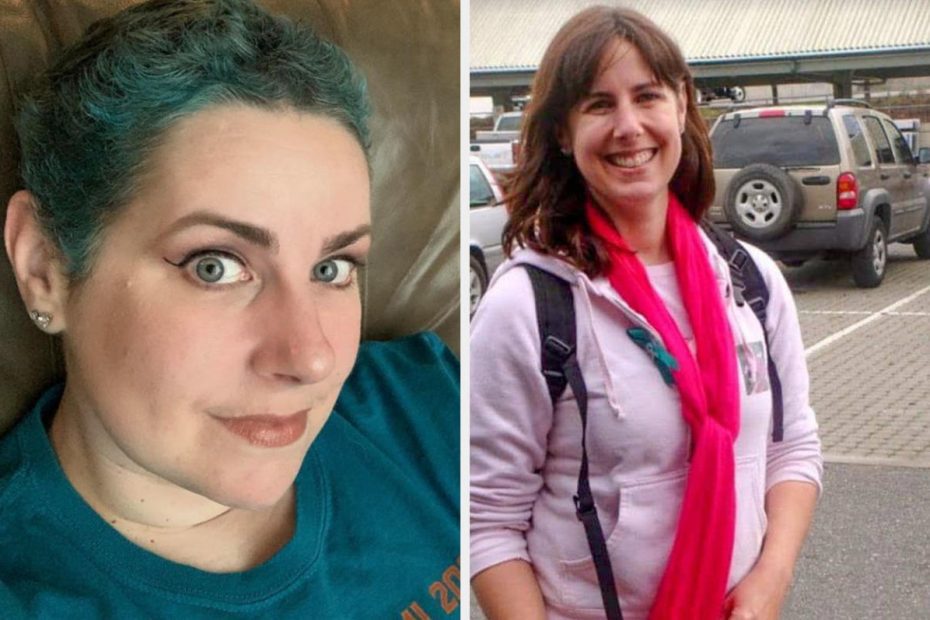I knew what to look for, but I missed the signs.
I went to an ovarian cancer awareness walk ten years before I was diagnosed at age 44. I took home pamphlets describing it as a “silent killer” because most people don’t notice the symptoms, which include frequent urination, feeling full quickly, changes in bowel movements, bloating, fatigue, upset stomach, back pain, pain during sex, constipation and heavy periods.
Unfortunately, any of these symptoms could be a sign of something else, so we are often misdiagnosed and don’t know we have ovarian cancer until it is advanced. It is incurable and often fatal.
For 10 years after the awareness walk, I didn't notice any changes in my health that I thought were unusual. I continued to get Pap smears at the recommended intervals and began annual mammograms at age 41, even though my doctor advised against them. “There are too many false positives,” she said.
It was a dermatologist, not a gynecologist, who diagnosed me. I had a small growth, the size and color of a pencil eraser, in my belly button. When the dermatologist removed it, he thought it was something harmless. The biopsy said otherwise.
The call came on April 1, 2020. That first day, I was only able to get my blood tested. At that point in the pandemic, we didn’t know if we could get COVID-19 from surfaces. I would use my shirt sleeve to open doors and wake up in the middle of the night with the same shirt on, wondering if there was coronavirus on my sleeve.


The blood test found elevated levels of cancer antigen 125, a tumor marker that is not a completely reliable indicator of ovarian cancer. Too many false positives. False negatives, too. My CT scan a week later showed that each ovary was occupied by tumors the size of a small citrus fruit, and I had a third tumor the size of a larger citrus fruit in the middle of my abdomen. The cancer had spread through my belly button and my navel, which, as far as I knew at the time, was the only symptom I had.
There seem to be as many ways to find cancer as there are people who have it. According to the American Cancer Society, that's 1 in 78 people with ovaries, of all ages. One in 108 will die from it.
A Pap smear does not detect ovarian cancer, and there is no ovarian version of a mammogram. Of the people in my online support groups, some discovered their cancer while they were pregnant or trying to figure out why they were not getting pregnant. Some had unusual bleeding or some other emergency that landed them in the hospital.
Countless others sought medical attention for the symptoms listed above, only to be misdiagnosed as irritable bowel syndrome, heartburn, diverticulitis, or menopause. Too many patients were sent home thinking it was nothing, or that they were making a big deal out of it, or that it was their own fault because they were overweight.
We misdiagnose ourselves and avoid going to the ER for the same three reasons. I did. In retrospect, I had terrible back pain six months before I was diagnosed. I thought I had strained my back lifting my 85-pound old dog. I learned to lift with my legs and it mostly went away. I can’t imagine a scenario where my attempts to relieve my lower back pain would have led to me asking about ovarian cancer.
More than a year after my diagnosis, after several months of being cancer-free, I remembered having occasional sharp chest pains over the past few years. My internet research at the time convinced me it was heartburn, likely from overeating refined carbs and chocolate. Waiting it out at home was better than spending hours in the emergency room, and I never thought to tell anyone. It wasn’t until 13 months of worrying about symptoms I’d missed that I figured out this could be a sign of ovarian cancer.
Did my belly button save my life?


If my cancer hadn’t come out of my body through my belly button, it probably wouldn’t have been discovered until it had disrupted other vital organs like my liver, kidneys or lungs. It could have been a death sentence.
When I met my gynecological oncologist via video conference, she told me, “Ovarian cancer is not curable, but it is treatable.”
My treatment started with three chemotherapy infusions, which caused my hair to fall out, before we discovered I had a rare subtype called low-grade serous ovarian cancer, which often does not respond to chemotherapy. My gynecologic oncologist said, “The chemotherapy didn’t work as well as we had hoped.”
I had to clarify: “You mean it didn't work at all.”
In June 2020, my surgeon removed my ovaries, fallopian tubes, uterus, omentum, cervix, and 10 inches of colon because (surprise!) one of the ovarian tumors had perforated my colon. She removed all the cancer she could see and my post-op blood work showed decreased levels of CA-125 and another tumor marker called human epididymal protein 4 (HE4). Follow-up CT scans have shown no evidence of residual disease.
A common question people ask at this point is, “So are you okay now?”
Yes and no.
Ovarian cancer is considered a chronic disease. I will probably have a relapse eventually. Even with all those organs removed, the cancer could come back somewhere else. But I don’t feel any closer to death than I did a year ago. If it does come back, I hope that by the time it does, ovarian cancer research will have led to a cure for all future manifestations of my cancer.


The ovarian cancer ribbon is teal. I dyed my newborn hair cap teal and painted my nails the same color for a follow-up appointment in September with my medical oncologist. The nurse taking my vitals complimented me on the coordination. “Thank you,” I said. “Ovarian Cancer Awareness Month.”
She paused in her disinfection of the pulse oximeter and looked at me again. “Why didn't we know it was Ovarian Cancer Awareness Month?”
Maybe for the same reason I didn't realize I had ovarian cancer, even though I went to an awareness walk. Ovarian cancer is a sneaky bitch.
Since my diagnosis, I tell my friends that ovarian cancer cannot be detected with a pap smear and I also give them a list of symptoms to look out for.
“I have them all,” they usually say.
I asked my gynecological oncologist what they should do. Should they order a CA-125 blood test and an abdominal ultrasound? No, she said. They should tell their doctors about their symptoms and ask, “Do you think it could be something to do with my ovaries?”
Then she told me that early screening does not improve survival rates for ovarian cancer. That took me a while to understand. I came to understand that it doesn't necessarily matter when we find ovarian cancer if we don't have a way to cure it.
Not only do we need some sort of smear test of our ovaries, but more research is needed to find a cure.
Kari Neumeyer is a writer and editor in the Pacific Northwest. When she’s not writing about cancer, she writes about dogs and salmon. She’s working on a memoir about her ovarian cancer diagnosis and treatment. Her first memoir, Bark and Lunge: Saving My Dogs from Training Mistakes, was published in 2014. She holds a master’s degree in journalism from the Medill School of Northwestern University.
This article originally appeared on HuffPost.

